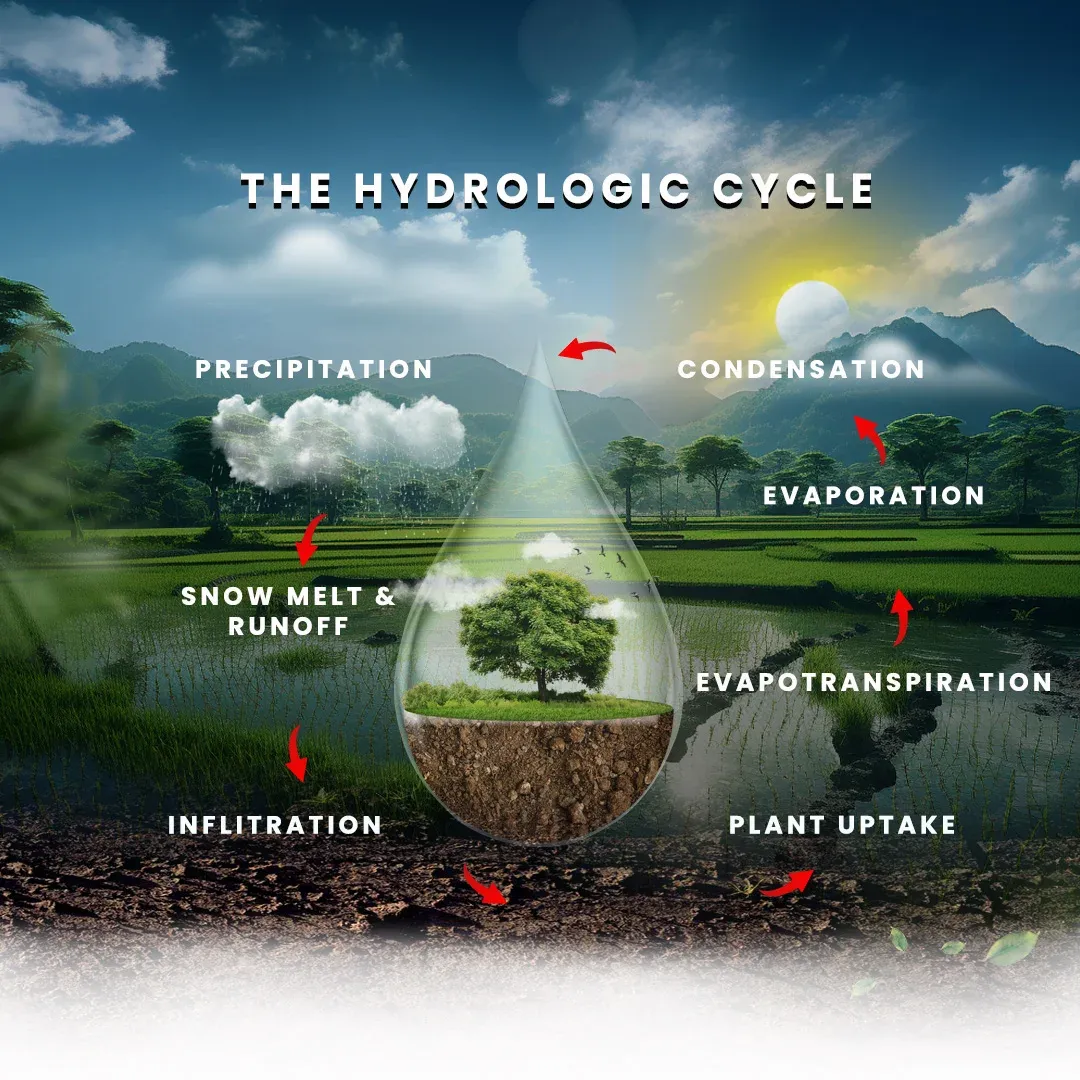- Get link
- X
- Other Apps
- Get link
- X
- Other Apps
Healthy soil is crucial for sustainable farming and gardening, and it is influenced by several natural cycles. Here, we explore three essential cycles that play a significant role in maintaining soil health: the Carbon Cycle, the Nitrogen Cycle, and the Hydrologic Cycle.

-
The Carbon Cycle
Soil contains a vast amount of carbon—more than all the plants, animals, and the atmosphere combined. According to the USDA, soil organic matter holds about four times more carbon than living plants. When this organic matter is depleted, it releases carbon dioxide into the atmosphere. To keep carbon compounds in the soil, it's vital to practice minimal soil disturbance, maintain vegetation cover year-round, and limit the use of synthetic materials. The combination of "living, dead, and very dead" organic matter is essential for retaining soil carbon.
-
The Nitrogen Cycle
Nitrogen is a critical nutrient for plants, and its availability in soil is closely linked to organic matter levels. Each percentage point of organic matter in the top six inches of soil contains about 1,000 pounds of nitrogen. Microorganisms in the soil convert this nitrogen into forms that plants can absorb. Synthetic nitrogen fertilizers, although commonly used, are produced through an energy-intensive process that emits a significant amount of CO2. In contrast, planting cover crops like legumes naturally fixes nitrogen from the air, offering a more sustainable and less polluting alternative.
-
The Hydrologic Cycle
The rate at which water infiltrates soil affects not only your field but also nearby water bodies and the ocean. Soils rich in organic matter and minimally disturbed improve water infiltration through clay and reduce rapid water flow through sand. Water that seeps deep into the subsoil may recharge aquifers, but it can also carry harmful chemicals, impacting the local water supply. Soil erosion, driven by rainfall, can take various forms, including splash, sheet, and rill erosion. Healthy organic matter, comprising "living, dead, and very dead" components, helps mitigate erosion and supports plant resilience.
-
Conclusion
Enhancing soil health is fundamental to sustainable agriculture and environmental stewardship. By implementing practices such as cover cropping, crop rotation, reduced tillage, organic amendments, and integrated pest management, farmers can significantly improve soil health. These practices not only boost agricultural productivity and profitability but also contribute to environmental conservation and resilience against climate change. Ensuring soil health is maintained and improved is essential for the long-term viability of farming systems and the well-being of our planet.
- Get link
- X
- Other Apps


Comments
Post a Comment